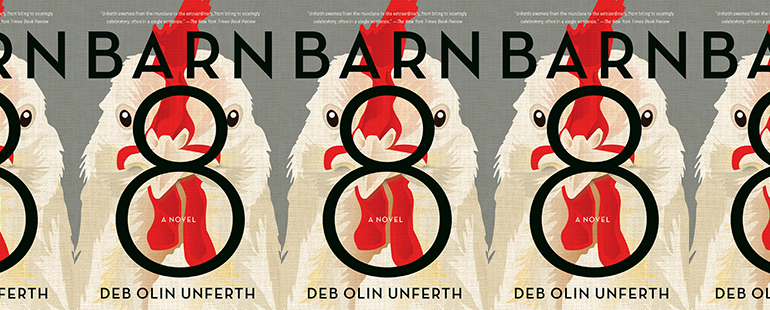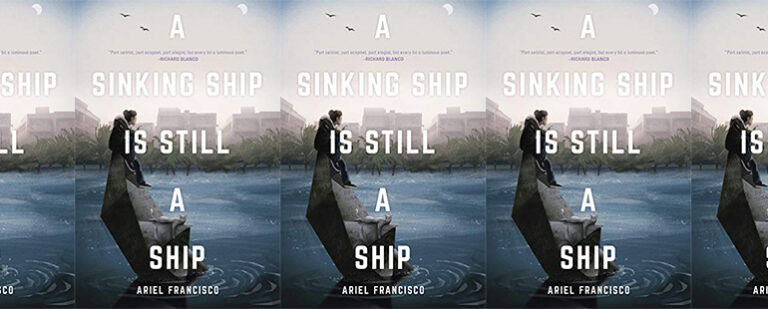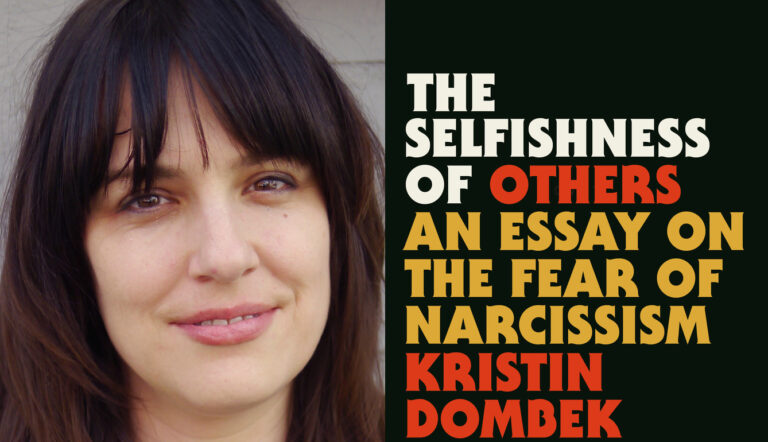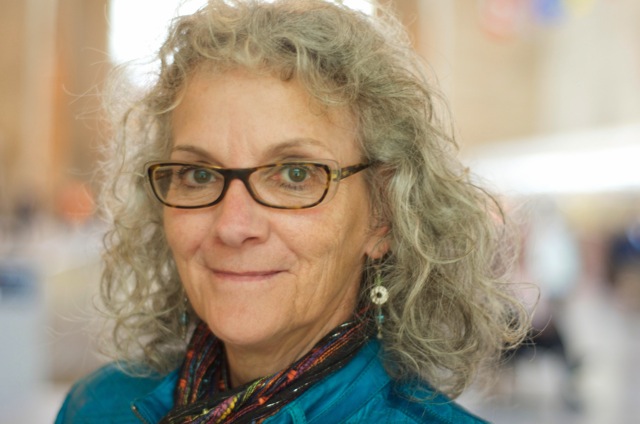“I think historically art and literature have had a role in social and political change”: An Interview with Deb Olin Unferth

How do you free a million chickens? With the help of a handful of co-conspirators, a well-intentioned plan, purposeful execution in the midst of unanticipated obstacles, and the passion to surmount injustice in the face of growing indifference and political turmoil. Barn 8, out today, is Deb Olin Unferth’s latest foray into the socio-political, an action-adventure with touches of humor built around an anti-big-ag upheaval though rooted in the fragile relationships we cling to in a chaotic, inspiring, and often difficult world.
Unferth, now a three-time Pushcart Prize winner and a 2018 Guggenheim Fellow, burst onto the literary scene in 2007 with the much-lauded story collection Minor Robberies, followed, in 2008, by the brilliant novel Vacation, a subtly funny pseudo-mystery based on a wife’s nighttime wanderings, a former’s classmates lost marriage, and a husband playing detective. In 2011, Unferth published Revolution: The Year I Fell in Love and Went to Join the War, a memoir brimming with ruminations about what it means to be part of a cause, and what it means to attempt to do so while stumbling through relationships. A National Book Critics Award finalist, Revolution clarified and deepened Unferth’s connection to social consciousness, leading perfectly to her newest book. While Revolution reveals in nonfiction Unferth’s passion for making a difference in our world, even when the attempt grows comical or sad, Barn 8 takes up this mantle with gusto in fiction, allowing Unferth even more room to digest and dissect a rebellion against big agriculture.
When Unferth’s protagonist, Janey, reluctantly takes a job as an auditor in the egg industry, she quickly learns the reality of factory farming’s awful conditions, the manipulation and downright disregard for regulations present in the industry, and the plight of the animals, catapulting her into activism. Speaking to co-conspirator Annabelle Green, here is an early example of how Janey is brought to the justifiable conclusion of mounting an insurrection, particularly a large-scale one:
We’ve got to get serious. We have reached the apex of employment-based investigations. It’s all falling apart. The farmers are onto us. They’re a slow bunch, but they’re catching on. They share databases now. They have facial recognition software, fingerprint scanning. They’ve got the government in their pocket more than ever. Ag-gag is old news, only the beginning. The walls are closing in, the corridors shrinking like a cartoon. It’s time for extreme measures.
The horrific conditions surrounding the egg industry are in part what also lead Janey to start thinking of herself in two sections—Old Janey and New Janey, the latter steadily working toward mutiny throughout the novel, with the former coming from somewhere else entirely.
Barn 8 begins with Janey running away from home, seeking a father she’d never really known and rebuking her mother; Janey didn’t know she’d end up losing her mother before she could get back. After her mother’s death, her father steps up to give her a new life to hold to, setting into motion Janey’s development of a relationship with a now-grown version of a child her mother used to babysit, her acquisition of an unwanted job as an agricultural auditor for the egg industry, and, eventually, her spiral into activism, which no one could have anticipated.
While some of Barn 8’s characters preach to Janey of the need for change in big agriculture, perhaps even on the scale of extreme measures, others work her from a different angle, investing in the visual resonance of factory farming—the pathos—prompting her to obtain a more abstract perspective: “She remembered the city of hens,” Unferth writes. “A whole generation. She remembered the vision, hundreds of thousands of hens rising out of their cages and taking off into the night.” As we see here, activism is only one half of the spark that ignites Janey’s fire. The other half comes from somewhere deeper, a soulful, philosophical yearning to set free what has been caged, to lift what has been crushed, and to salvage what has been squandered. In this way, a million chickens become a parallel to Janey’s life, the defining of a new path, the blazing of a new trail when things unravel. This becomes especially true when Janey melds the critical information about farm conditions with that philosophical pathos and makes a commitment to attempt the impossible: “‘Cleveland,’ she whispered, though Cleveland couldn’t hear her, ‘let’s take them all,’ because the new Janey had arrived.”
But no one could free a million chickens alone, and Janey is no exception—she needs many others to help her with the job. Janey’s story is first enriched by, and eventually overrun with, a passel of characters, each brought to light in his or her own section of the book, every backstory individually unfurled, each peppered with the character’s own complicated histories and contemporary struggles. There is Cleveland, an experienced auditor who was once babysat by Janey’s mother; Dill, a semi-retired, high-caliber ag investigator of such renown he might be hunted by the FBI; the banker, Dill’s mostly unseen and mostly off-again husband; and Jonathan Jarman Jr. and Annabelle Green, a young couple split apart by time and circumstances and brought back together in the twilight of this plan to free a million hens from a single farm. This cast comes to reflect and be reflected by the profusion of chickens, so many of them with their specialties and unique skillsets coming together for a common goal—the defeat of a major antagonist—to fight one last time, not for the flash of a public display or the fireworks of national headlines, but for themselves, for all the obstacles they’d encountered in their lives, all the challenges they’d faced, until their landscape became maybe too much like those far-stretching enclosures, people pressed against people, each vying for our own tiny patch of existence.
Exposing whether the plot to free a million chickens succeeds or not would completely spoil the novel, but victory or loss doesn’t seem to be Unferth’s true aim. For a writer who joined a revolution many years ago and remains passionate about global change and localized activism, Barn 8 ends up redefining both in its focus on a cast of great depth and development, its exploration of a hunger for revealing the truths of factory farming, and its beautiful use of fiction as a means of inciting a larger conversation not only about literature, but about the exploits and problems of the current agricultural landscape.
I recently spoke with Unferth about the seed of chicken theft, the modes and tenors of her book, what it means to be both an activist and a novelist, the meshing of humor with the awful realities of factory farming, and the role of fiction in our global consciousness.
J.A. Tyler: First things first: when did you first know you were going to write a novel that involved chickens—a million chickens—and how did the idea come about?
Deb Olin Unferth: Well, I don’t think anyone likes factory farming, or the fact that so many millions of animals are squashed into tiny cages and left there to smother. I was reading a news article about layer-hen cages and suddenly I had an image in my mind of all the hens in a barn leaving, coming out of the doors, the barn emptying, and I felt this tremendous relief. Like a heavy weight off me. It seemed like such an easy solution. Why couldn’t we just do it?
JAT: In Barn 8, you take up that exact question. Yet the book is a work of fiction. Do you believe novels can change the world? Do you think that activism can live as heartily within a fictional context, and have the same impact, as a nonfiction piece about the dangers of big agriculture or political threats?
DOU: Well, I think historically art and literature have had a role in social and political change, not always in obvious ways. I can think of dozens of examples of novels that helped usher in new ways of thinking about social issues: books by Toni Morrison, Margaret Atwood, Alex Haley, Upton Sinclair, Leslie Marmon Silko. . .It is true that I can’t think of many novels that have animals at its center (Sinclair’s The Jungle was intended to be about workers’ rights, Animal Farm is an allegory. . .) but I think the time has come! I’ve been waiting for the avalanche of literature on mass extinction, factory farming, climate devastation. And to write about it and still be funny? To write about it and be literary, philosophical, revelatory, character-driven? Those were my goals. I hope I succeeded to some tiny degree.
JAT: You absolutely have, and I think many readers are likewise anticipating that same avalanche on the fiction shelves, where Barn 8 now sits. Speaking of the novel’s literary, character-driven voice: its pace is energetic and springy, carrying the reader from event to event with punch and push, and yet the characters are introduced methodically, typically a single person at a time. How did you manage this evenly paced reveal while retaining the novel’s energy? Was it something you worked on in the planning and outlining stages, or did it happen organically in drafting the book?
DOU: I knew how I wanted the shape to look from the earliest drafts, but some pieces of it were train wrecks for a long time. One section I rewrote thirty or forty times, I spent months and months and months on thirty pages, trying to smoothly move from one section to another without losing energy. Other sections came together very quickly, a couple of drafts and it fit in like a puzzle piece. I had a big picture image from the first words of the novel I wrote, but the details took years.
JAT: The time was well-spent for sure. One section break in particular struck me, and that’s midway through the novel where we’re suddenly thrust out of the standard format and into a Q & A between the authorities and a newly introduced character. How did this tactical shift come about?
DOU: I always wanted a sort of Cubist portrait of what was happening. I wanted many points of view, perspectives, voices, all looking at and talking about this one event: all the hens leaving that farm. How did they do it? Why did they do it? And the weirder I could get the better. And the more emotional I could get, even better. I wanted that particular character’s storyline to seem at first like a radical and playful change in register, but then to grow more and more emotional as she comes back at the end of the book.
JAT: You mentioned before that to be political in a novel, to have an activist mindset while retaining a work’s literary footholds, its characters and its humor, was the goal, and Barn 8 has fantastic displays of all of these things. What was it like trying to meld humor with what was surely very tough research on the atrocities of factory farming?
DOU: I got some of the outrage and horror out of my system early on, by writing this long investigative piece on the egg industry for Harper’s. Along the way I spent so much time with farmers and activists and investigators and chickens and I found I grew a heart for them all. Pieces of them wound up in the book. And I have to admit a lot of them were a little funny (is that how you grow a heart for someone?). The human race is a little funny. Our predicament, our plans, our endlessly horrible solutions. . .it’s all a little funny, even while being utterly devastating and disappointing.
JAT: Indeed. On that nonfiction side, what were some of the greatest influences on you before and during the crafting of Barn 8 and how did they affect the novel’s development?
DOU: I think the book that really started me down the road of Barn 8 was Parrots for Dummies by Nikki Moustaki, a book from the Dummies series about how to care for your parrot! Her approach wasn’t about teaching them tricks, it was about having a relationship with this wild animal that you’ve imprisoned and that once flew miles a day and slept in trees. It’s amazing. I highly recommend it.
Later, I read a lot of books about animals, especially farm animals, especially chickens. It was very, very hard to find books or articles about chickens that didn’t start from the assumption that chickens are here for our use. Two I found were Chicken by Annie Potts and Chickens’ Lib by Clare Druce. The Druce book is hilarious, by the way. So much more fun to read Druce’s droll prose about she and her mother roving the English countryside saving chickens, than to read, say, the Animal Liberation Front manifestos! Though I read those too.
I read Paul Kingsnorth, Gary Francione, Elizabeth Kolbert. Some of it for facts, some of it for characters.
I also started teaching at a prison in south Texas in 2015, and as a result I read a bunch of books that I brought for their library: [W. E. B.] Du Bois, Alex Haley, [Frederick] Douglass, [James] Baldwin, [Zora Neale] Hurston, Dee Brown. I wouldn’t say that they directly influenced the novel, but I loved surrounding myself with voices of people who were trying to change the world, who weren’t afraid of being angry or of taking radical action.


